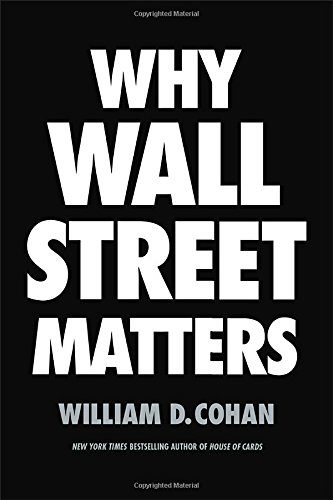Jim McKelvey, entrepreneur and co-founder of Square, will be the keynote speaker at the Second Annual Wealth and Asset Management Research Conference to be held at Olin Aug. 22-23, 2017. Hosted by the Wells Fargo Center for Finance and Accounting Research (WFA CFAR), the meeting brings together researchers and practitioners who share the common goal of better understanding the capital markets to create better outcomes for investors. The conference will feature research from leading academics with audience discussions lead by industry experts in each given field of research.
McKelvey was appointed as an Independent Director of the St. Louis Federal Reserve in January 2017, but is better known for his involvement in several St. Louis-based startups including Cultivation Capital (general partner and co-founder), Six Thirty (co-founder), LaunchCode (founder), Third Degree Glass Factory(co-founder), Mira publishing (founded when he was a WashU student), and Square, the mobile payment company he founded in 2009 with Jack Dorsey.
McKelvey graduated from Washington University in 1987 with degrees in Economics and Computer Science. Earlier this year, he donated $15M to the University to build a new computer science and engineering building named in honor of his father, James McKelvey, Sr. who is a former dean of the School of Engineering and Applied Science.
In addition to research topics, the one-and-a-half-day conference will feature presentations by noted industry experts including attorney Jerry Schlichter, and author William Cohan.
Link to register.
Sessions will be held in Emerson Auditorium, Knight Hall.
Conference Schedule:
Tuesday, August 22, 2017
12:00 – 1:00 pm Registration – Knight Hall, Frick Forum1:00 – 1:15 pmWelcome & Opening Remarks Richard Ryffel, Senior Lecturer in Finance, Washington University
1:15 – 2:00 pm Presenter – Bob Dannhauser, Head, Global Private Wealth Management, CFA Institute, “The Art and Science of Wealth Management: Looking to the Future”
2:15 – 3:00 pm Presenter – Dan Bergstresser, Associate Professor of Finance, Brandeis International Business School, “Changes in the Municipal Bond Landscape since the Global Financial Crisis”
Discussant – Linda Matkowski, Chief Operating Officer, Stern Brothers & Co.
3:00 – 3:45 pm Presenter – Andy Kalotay, President, Andrew Kalotay Associates, “Tax Optimization of Municipal Bond Portfolios”
Discussant – Steve Wood, Principal, Stephen A. Wood Consulting, LLC
4:00 – 5:00 pm “Remembering Steve Ross: The Man and His Ideas” – Phil Dybvig, Boatmen’s Bancshares Professor of Banking and Finance, Washington University, Rick Antle, William S. Beinecke Professor of Accounting, Yale University, Michael Griswold, Senior Director, Risk Managment and Asset Allocation, Ascension Investment Management
Wednesday, August 23, 2017
8:00 – 9:00 am
 A Discussion of the Importance of Financial Services to the Economy – William Cohan, Author, “Why Wall Street Matters“
A Discussion of the Importance of Financial Services to the Economy – William Cohan, Author, “Why Wall Street Matters“
9:15 – 10:00 am Presenter – Jerry Schlichter, Founding and Managing Partner, Schlichter, Bogard, & Denton, “Litigation Pitfalls for 401k Plan Fiduciaries”
10:15 – 11:00 am Presenter – Matt Ringgenberg, Associate Professor of Finance, David Eccles School of Business, “On Index Investing”
Discussant – Hans Fredrickson, CIO, Oak Summit Capital
11:00 – 11:45 am Presenter – Todd Gormley, Associate Professor of Finance, Washington University, “Standing on the Shoulders of Giants: The Effect of Passive Investors on Activism”
Discussant – Charles Stucke, Chief Executive Officer, Lepercq
12:00 – 12:45 pm Presenter – Emily Gallagher, Postdoctoral Research Associate in Household Finance, Washington University, “Financial Challenges of Low-Income Households”
Discussant – Chris Krehmeyer, President and CEO, Beyond Housing
2:00 – 2:30 pm FinTech Showcase – Presenter – Cliff Holekamp, Senior Lecturer in Entrepreneurship, Academic Director for Entrepreneurship “How Venture Capital Pays”
2:30 – 3:30 pm FinTech Showcase Panel – Ben Harrison, Chief Revenue Officer and Co-founder, DealCloud, Inc., Josh Smith, Co-founder and CEO, Solovis, Laurence Stock, COO and Co-founder, Numerated Growth Technologies, Inc., “Automation in Asset Management”
Moderator – Joe Maxwell, Managing Partner, Cultivation FinTech
3:30 – 4:15 pm FinTech Showcase – Keynote Address – Jim McKelvey, General Partner and Co-founder, Cultivation Capital, Co-founder and Director, Square.
 Cohan was a headline speaker at the conference sponsored by the Wells Fargo Advisors Center for Finance and Accounting Research held Aug. 22-23. Cohan’s current career involves writing books about how big finance works behind the headlines. Cohan discussed his latest work, Why Wall Street Matters, with Rich Ryffel, senior lecturer in finance.
Cohan was a headline speaker at the conference sponsored by the Wells Fargo Advisors Center for Finance and Accounting Research held Aug. 22-23. Cohan’s current career involves writing books about how big finance works behind the headlines. Cohan discussed his latest work, Why Wall Street Matters, with Rich Ryffel, senior lecturer in finance.




 Gorton’s 2010 book, Misunderstanding Financial Crises, Why We Don’t See Them Coming, provides historical context for understanding the 2008 financial crisis and why economists and policy makers need to recognize that crises are inevitable and inherent to our financial system. To those who thought that a crisis could not happen again in the US after the Great Depression, Gorton is blunt: “That economists did not think such a crisis could happen in the United States was an intellectual failure.”
Gorton’s 2010 book, Misunderstanding Financial Crises, Why We Don’t See Them Coming, provides historical context for understanding the 2008 financial crisis and why economists and policy makers need to recognize that crises are inevitable and inherent to our financial system. To those who thought that a crisis could not happen again in the US after the Great Depression, Gorton is blunt: “That economists did not think such a crisis could happen in the United States was an intellectual failure.”

 A Discussion of the Importance of Financial Services to the Economy –
A Discussion of the Importance of Financial Services to the Economy – 









